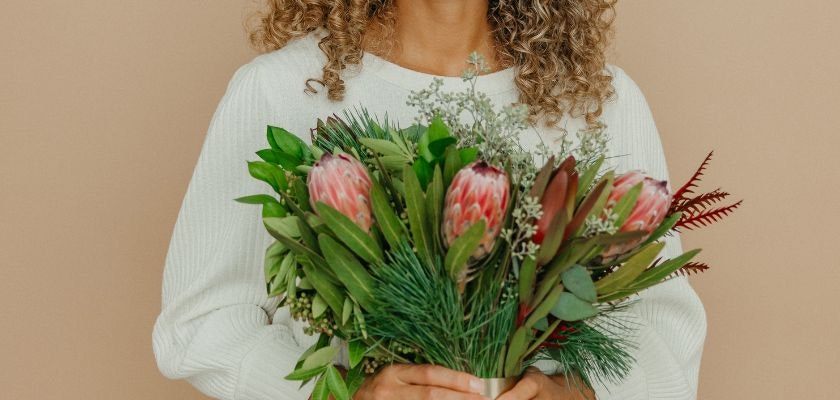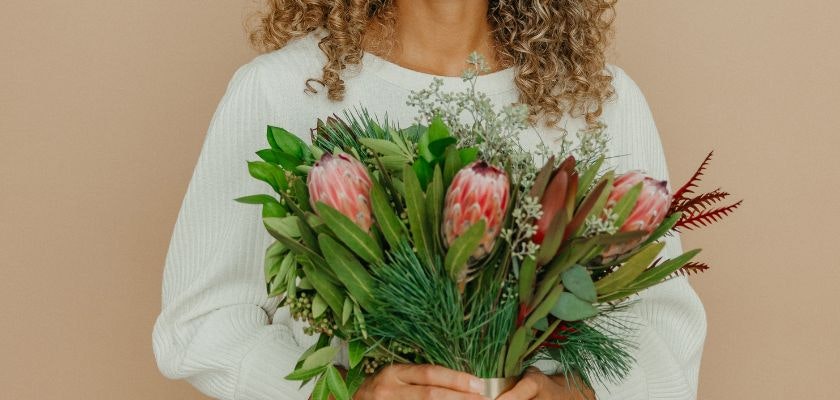What's the Deal with FTD Florists?
Flowers have long been a universal way to express emotions, celebrate occasions, or simply bring beauty into our lives. But behind the scenes of every bouquet lies the intricate web that enables its delivery.
What’s the Deal with FTD Florists? | Flower Delivery Options
One such system is the FTD, or Florists' Transworld Delivery, a staple in the flower delivery network world. If you've sent flowers internationally or to someone in a distant city, there's a good chance FTD florists facilitated that surprise.
At its core, FTD acts as a floral broker, connecting local florists under one umbrella. The idea was groundbreaking when it originated in the early 20th century. No longer did customers need to rely solely on local options; they could send flowers anywhere, ensuring their sentiment traveled far and wide. But while FTD revolutionized the industry, its operation has pros and cons for both consumers and florists alike.
Understanding how FTD operates is key to appreciating its role. Rather than handling inventory or creating arrangements directly, FTD acts as a coordinator, using its extensive member network to fulfill orders. If you order online through their platform, the request is sent to a nearby associated florist who then prepares and delivers the flowers. It’s a seemingly efficient system designed to make the process seamless. Yet, like many large systems, there are operational intricacies that can impact the experience.
For customers, FTD presents the opportunity to send flowers globally without hassle. But the convenience often comes with trade-offs. Concerns about pricing, quality, and consistency occasionally arise, leaving some wondering if the service truly delivers what it promises. Meanwhile, the small businesses at the heart of FTD's network may face their own challenges. The balance between gaining more orders and the associated fees shapes their partnership experience.
For local florists, FTD offers both opportunities and dilemmas. On one hand, being part of the flower delivery network can supplement income by attracting more customers. On the other hand, heavy fees, commission structures, and strict compliance can sometimes hinder their growth. These impacts ripple through the consumer experience as well.
When we explore the relationship between technology and florists, how platforms like FTD bridge the gap between consumers and local businesses becomes clear. However, the rise of subscription services like BloomsyBox offers an alternative approach. By working directly with growers and maintaining consistent quality, services like BloomsyBox are carving out a space in this competitive landscape.
Throughout this blog, we’ll unpack the various dimensions of FTD's operation, explore its benefits and drawbacks for all parties involved, and ultimately discuss why other options like BloomsyBox may better meet modern consumers’ needs.
How FTD Florists Operate
FTD florists are part of an expansive network that makes flower delivery possible on a global scale. But how exactly do they function, and what makes this flower delivery network unique? At its core, FTD works on a simple yet intricate principle of connecting florists with consumers using technology.
When customers place an order on FTD’s website, the request doesn’t go through FTD's warehouse since they don’t maintain flowers themselves. Instead, that order is transmitted to a local florist within their network based on proximity and availability. What’s convenient about this model is that you can send flowers anywhere, even across borders, ensuring they’re at their freshest upon delivery.
This model heavily relies on its participating florists, who agree to be part of the flower delivery network. Florists manage the actual arrangements and hand-deliver orders. It’s a symbiotic relationship where FTD generates orders for the florists, and florists fulfill them on behalf of FTD.
However, being a part of this network isn’t without obligations. FTD florists must adhere to certain standards, keeping floral designs and delivery times in line with FTD’s promises. While this ensures consistency for customers, it can limit creative freedom for local florists who want to stand out with individualized service.
An interesting technological innovation that FTD brought to the industry is the Mercury system, which streamlines order processing. Though it enhances efficiency, it also solidifies reliance on the FTD ecosystem, making it difficult for florists to function independently once they’ve joined the network.
From a consumer perspective, FTD’s websites and customer service systems offer streamlined ordering and tracking. Modern customers appreciate these features, especially when sending flowers to distant locations. The ideal FTD experience involves minimal effort and maximum satisfaction, though this isn’t always guaranteed.
The competitive edge of the FTD network lies in its longevity and brand recognition. Customers are familiar with its name and often trust it without questioning alternatives. However, this trust may waver, especially for those with less-than-stellar delivery experiences or disappointment with the final product.
It’s also worth noting that FTD has faced increasing competition from innovative alternatives. Services like BloomsyBox cater to customers looking for guaranteed quality and freshness by partnering directly with flower growers. This direct-to-consumer model eliminates many shortcomings associated with the FTD network system.
Pros and Cons of Being Part of an FTD Network
Local florists considering joining FTD must weigh the pros and cons of network membership. On the positive side, the FTD flower delivery network exposes florists to a larger client base. With FTD’s marketing efforts and global reach, even small shops can fulfill orders from distant cities, boosting sales volume.
Simultaneously, partnering with FTD ensures that florists stay busy. Instead of relying solely on walk-in customers or local marketing, FTD sends a steady stream of orders, diversifying revenue sources. For florists in smaller communities or seasonal markets, such partnerships can be a lifeline.
FTD also provides various tools for its members, including the Mercury system, templates for floral arrangements, and customer service support. These resources simplify operations, which can benefit small florists needing established systems.
However, the challenges cannot be overlooked. At the top of the list are fees and commissions. FTD requires florists to pay membership fees and takes a significant cut from every order fulfilled. These deductions often limit the profitability of each delivery, leaving florists with slimmer margins.
Compliance with FTD’s standards can also be restrictive. Florists might face limitations on creativity and individuality, as they may need to adhere to predetermined floral designs and pricing structures. This corporate standardization conflicts with the personal touch many local shops pride themselves on.
Lastly, there’s the potential for poor reviews. Even if FTD florists put care into their arrangements, problems like miscommunication or delays caused by the network’s structure can lead to customer dissatisfaction. Florists bear the brunt of this feedback, even when the fault isn’t their own.
Thankfully, other platforms like BloomsyBox have emerged to take on these challenges differently. By sidestepping middlemen and working directly with growers, BloomsyBox allows florists and customers to focus on what matters most: quality and satisfaction.
Consumer Experience with FTD Florists
The consumer experience is a crucial aspect of FTD's functioning as a flower delivery network. For many customers, the promise of straightforward ordering and timely delivery is what attracts them to companies like FTD. The simplicity of logging on to a website, selecting arrangements, and having flowers delivered to a faraway location is undeniably appealing. This ease of use is a major strength for FTD and similar services.
However, while the platform is user-friendly, issues arise when expectations don’t match reality. For instance, the allure of polished, professionally crafted bouquets in images may not always translate to the same quality upon delivery. Since FTD relies on local florists to create and deliver arrangements, varying levels of craftsmanship can affect customers' satisfaction.
Delivery reliability is another pivotal factor. Customers often depend on flower delivery networks like FTD for important occasions, from anniversaries to sympathy arrangements. A late delivery or a mismatched bouquet can dampen the sentiment behind the gesture. Though FTD's customer service teams often try to reconcile such issues, customers may be left with an inconsistent impression of the brand.
Another noteworthy element is pricing. Many consumers note that FTD services can be more costly than going directly to a local florist. This can create the perception of overpaying for the convenience of online ordering, especially when fees and add-ons accumulate. Transparency in pricing can make or break the experience for budget-conscious buyers.
Additionally, customers navigating the FTD platform may encounter challenges in customization. While the system offers various templates and designs, it lacks the bespoke flexibility of local florists who can tailor arrangements to meet specific requests. For individuals seeking unique or personalized floral designs, this limitation can steer them toward alternatives.
Still, consumers value FTD florists for their reach. People needing to send flowers to loved ones across the country or even internationally often rely on FTD to act as the bridge. With a vast network at its disposal, FTD strives to ensure flowers arrive as close to fresh as possible, a feat not every florist service can achieve.
An interesting dynamic emerges when comparing FTD to newer services like BloomsyBox, where direct partnerships with growers ensure sustained freshness and design consistency. Offering subscription-based options, BloomsyBox creates a seamless experience for those invested in regularly receiving or gifting premium flowers.
The Impact on Local Florists
When analyzing FTD Florists and their role in the flower delivery network, the impact on local florists provides an intricate view of the balance between opportunity and constraint. First and foremost, participating in FTD can be financially advantageous for local florists seeking to reach a broader audience. With global marketing efforts and exposure, many small florists enjoy a steady stream of external orders they might not otherwise capture.
However, this partnership comes at a cost. Florists in FTD’s network often pay fees ranging from monthly charges to commission-based cuts on each bouquet delivered. These deductions can significantly affect profitability. If a florist is making dozens of FTD orders a week but earning reduced margins, the benefits may feel less pronounced over time.
Another issue is the dependency created by the system. FTD florists often rely heavily on network orders to stay afloat, potentially at the expense of growing their brand independently. Over time, this dynamic may hinder their ability to diversify customer acquisition methods.
Despite these drawbacks, there are non-monetary advantages. FTD provides member florists with access to streamlined technological systems, making order management and fulfillment simpler. The Mercury system, as previously mentioned, reduces the administrative burden, allowing florists to focus more on arrangements and deliveries.
Nevertheless, creativity takes a back seat in this type of partnership. Local florists often find themselves constrained by FTD’s predetermined templates, which dictate not only how arrangements look but also pricing structures. For passionate floral designers seeking to create custom, artistic work, this limitation can cause frustration.
Additionally, customer perception plays a role in shaping these florists’ reputations. While florists may pour effort into crafting quality arrangements, the shortcomings of the larger FTD system—a late delivery here, a misunderstanding there—can reflect poorly on them rather than the network. This discrepancy remains a challenge every FTD florist must confront.
A solution that alleviates many of these issues is seen in the rise of platforms like BloomsyBox. By connecting directly with growers and bypassing intermediary fees, they prioritize both quality and fairness. Such alternatives allow florists who partner with BloomsyBox to refocus on their craft and expand their capabilities with fewer constraints.
Alternatives to Traditional Flower Delivery Networks
The evolution of technology has introduced consumers to a plethora of options when it comes to floral arrangements and delivery services. While FTD florists have built a reputable flower delivery network over the decades, other players in the industry have started to offer alternatives that address some of the drawbacks associated with traditional networks. These modern solutions often emphasize direct connections and simplified processes.
One prominent alternative is subscription services such as BloomsyBox. Unlike the FTD model, BloomsyBox bypasses local florists and instead works directly with flower farms. This means every bouquet comes fresh from the source, avoiding the need for middlemen that can increase costs and reduce freshness due to delays in handling. Consumers looking for consistent quality and ethical sourcing have started gravitating towards this model.
For consumers prioritizing bespoke arrangements, local florists opting out of flower delivery networks also provide an interesting choice. By visiting these florists in person, buyers can collaborate directly on designs, ensuring every detail aligns with their vision. This level of personalization is something an FTD florist may not always be able to offer on account of adherence to network policies and templates.
Still, convenience can be a game-changer for many customers. Digital-first platforms like BloomsyBox merge the best of convenience and quality by allowing users to set recurring deliveries or customize gifts online without compromising on the aesthetic value of their blooms. This is especially appealing for those aiming to send regular floral decorations to their homes or as scheduled gifts.
Another notable advantage of modern services lies in their marketing transparency. BloomsyBox, for instance, showcases its growing partners and ethical sourcing prominently, enabling eco-conscious customers to feel good about their purchase. Traditional flower delivery networks often operate invisibly, so customers don’t always know the florists handling their orders or where the flowers originated.
Additionally, newer services prioritize innovation. While FTD uses legacy systems, options like BloomsyBox leverage current technology to optimize packaging, extend the lifespan of flowers, and track orders efficiently. For consumers who value a high-tech touch when dealing with florist services, this distinction plays an important role.
Ultimately, the rise in viable alternatives benefits both florists and consumers. Florists no longer need to feel tethered to predetermined partnerships, and customers have the option to explore tailored services designed to prioritize quality over scale. By championing local artistry or exploring direct-to-grower models, the floral landscape is diversifying for the better.
BloomsyBox vs. FTD Florists
Comparing BloomsyBox to FTD florists offers a unique perspective on the different philosophies driving floral delivery services today. Both serve the ultimate purpose of delivering beautiful flowers to customers, but their approaches significantly diverge in execution and experience.
FTD florists operate as part of a vast network of local businesses, coordinating real-time orders between far-spread regions. This advantage allows them to guarantee rapid delivery across distances worldwide. If you need fresh flowers delivered tomorrow to a recipient on the other side of the country, FTD’s structure can make that happen.
BloomsyBox, on the other hand, prioritizes quality assurance by skipping the middleman. Every bouquet comes directly from growers, ensuring freshness and consistency that larger, hyper-networked systems like FTD sometimes struggle to maintain. For people who value predictability and longevity in floral arrangements, this distinction matters greatly.
A striking difference lies in pricing models. With BloomsyBox, customers pay a straightforward cost for what they receive, often accompanied by subscription discounts. FTD’s layers of fees, commissions, and potential markups add complexity, which can surprise customers once the full cost is calculated at checkout.
From a creative standpoint, BloomsyBox flourishes in its focus on unique designs crafted by professional florists partnered directly with farms. While FTD florists can undoubtedly create beautiful bouquets, they are often confined to prescribed templates to maintain consistency across orders. BloomsyBox’s emphasis on individuality resonates with customers looking for something a bit different.
Logistics remain another diverging factor. FTD’s reliance on local florists necessitates a degree of variability in execution. If you’ve previously had an inconsistent experience with FTD deliveries, this is partly due to the independence of each participating florist. BloomsyBox, working from a centralized model, offers a unified standard for each customer.
While FTD excels in its global reach and name recognition, BloomsyBox brings a customer-first mentality that integrates modern sensibilities like sustainability and direct sourcing. For those on the quest for the perfect floral experience, understanding these priorities can help choose the right service for their needs.
Challenges for Local Florists in the FTD Network
While many local flower shops join the FTD florists’ network hoping to expand their business reach, the unique challenges they face can make this partnership a double-edged sword. One of the most significant hurdles concerns financial sustainability. Florists are subject to steep membership fees, on top of commission cuts taken from every order. This constant financial outflow often raises the question of whether the revenue generated through the flower delivery network is worth the cost of participation.
Another obstacle is the lack of creative freedom. Many customers associate local florists with personalized designs and thoughtful touches, yet the FTD model often requires florists to fit customer orders into predetermined templates. This not only stifles creativity but also homogenizes the floral arrangements, stripping them of the unique style that defines an independent flower shop. Customers loyal to their local florist might notice this shift, which can lead to dissatisfaction.
Customer service complications also affect local florists within the FTD system. While FTD maintains a central customer service operation, problems like delayed deliveries, miscommunications about orders, or damaged flowers are sometimes handled by the florists themselves. This puts florists in a precarious position where they assume blame for issues beyond their control, which can harm their reputation and deter future business.
Another concern for local florists is the reliance on external orders generated by the FTD network. The boost in order volume is convenient but creates dependency, leaving florists vulnerable to shifts in FTD policies, fee increases, or a drop in generated orders. If that happens, businesses may struggle to adapt and regain autonomy in their operation.
Competition internally within the network also becomes a factor. FTD's flower delivery network connects multiple florists in overlapping regions, which might pit florists against one another. For smaller flower shops, competing with larger or more established florists in their area can result in fewer opportunities and increased pressure.
Yet, working with BloomsyBox offers an alternate path for florists who want more flexibility. BloomsyBox offers partnerships directly with growers, wherein florists enjoy transparency and retain their creative identity. This ecosystem thrives without the added layers of fees and commissions found in traditional networks.
Lastly, the long-term fitness of joining a flower delivery network like FTD depends on each florist’s goals. Those seeking predictable, steady income might find value, but others looking for innovation, artistic freedom, and consumer trust may see better results pursuing modern collaborations like those with services such as BloomsyBox.
Consumer Shift Toward Modern Florist Services
Consumer behavior regarding floral purchases has shifted dramatically over the last decade, driven in part by new technology and changing preferences. Customers once reliant on flower delivery networks such as FTD florists are now exploring options that better meet their specific needs. This trend reflects the evolution from convenience-based choices to a focus on quality, speed, and sustainability in florist services.
One of the most significant trends shaping consumer decisions is the emphasis on freshness. Modern buyers no longer settle for merely receiving flowers on time; now, they expect arrangements to stay vibrant for days after delivery. Services like BloomsyBox cater to this demand by sourcing flowers directly from growers, ensuring customers receive fresher bouquets compared to traditional models like FTD'S.
Customization has also become central to the modern flower-buying experience. Many consumers now want floral arrangements that resonate not just aesthetically but emotionally. Bespoke detail is rare in the FTD system, but independent local florists or subscription services like BloomsyBox offer personalized creations that speak volumes.
Another consumer shift relates to transparency and ethical practices. Shoppers increasingly seek florist services that align with their values, such as environmentally conscious sourcing or fair treatment of workers along the supply chain. While FTD florists operate through distributed networks, lack of clear grower information can concern eco-conscious buyers. Alternatives like BloomsyBox appeal in such cases by spotlighting ethical farming practices and a commitment to sustainable operations.
Technology also plays a pivotal role in changing customer expectations. Easy-to-navigate websites, real-time tracking, and subscription options have become the norm for leading florist services. FTD was a pioneer in offering these features but now competes against companies with more modern tech infrastructure, which enhances user satisfaction further. BloomsyBox stands out by combining both technology and thoughtful customer interaction into a seamless experience.
Pricing remains a deciding factor as well. While FTD florists can offer convenience for those willing to pay, customers are aware that high delivery fees or service charges do not always correlate to better bouquets. Subscription services or purchasing direct from florists often allows shoppers to get more value out of their budgets, fostering greater loyalty.
Lastly, availability is key as customers seamlessly shift between one service to another for different needs. Although FTD boasts impressive reach thanks to its international network, platforms like BloomsyBox show strong competitiveness when catering to individuals seeking excellent standards and reliability in the floral experience worldwide.
BloomsyBox as a Superior Option
BloomsyBox has emerged as a beacon of innovation within the flower industry, which often feels saturated by traditional practices. This subscription-based flower delivery service challenges much of what is standard in the field, offering consumers and florists alike a refreshing alternative to the older systems maintained by networks like FTD.
What sets BloomsyBox apart begins at its foundation – direct partnerships with growers. By skipping intermediaries, BloomsyBox ensures that every bouquet is as fresh as possible, arriving directly from the farm. Eliminating excess stages within the supply chain reduces delays, limits handling damage, and ultimately provides customers with longer-lasting flowers.
BloomsyBox’s model of a subscription service has tapped into a growing consumer desire for reliability and simplicity. Whether customers want fresh flowers delivered weekly or monthly, the ability to customize and automate floral gifts feels intuitive and modern. For people frequently looking for gifts or wanting their homes accentuated by seasonal blooms, BloomsyBox delivers unmatched convenience.
Its transparency when it comes to sourcing is another standout feature. Where traditional networks may obscure origins, BloomsyBox celebrates growers and suppliers as an essential piece of their brand identity, building trust in quality and ethical responsibility.
Technological advancements also play a key role in BloomsyBox’s success. Their user-friendly website and seamless navigation channels customers quickly toward their preferences. Paired with tracking systems that keep everyone informed during transit, this creates a smooth pathway from bouquet selection to the final delivery.
Finally, BloomsyBox strikes a balance between luxury and affordability, attracting buyers who want quality without the overpricing often witnessed in flower delivery networks. By ensuring reasonably priced subscriptions while maintaining premium standards, it sets itself apart for those seeking dependable fresh flowers over gimmicks or misleading promotions.
The Future of FTD Florists and Flower Delivery Networks
The landscape of flower delivery services is undergoing dramatic changes, and FTD florists find themselves at a crossroads. While their traditional flower delivery network has been a trusted system for decades, advancements in technology and shifts in consumer expectations are calling for innovation. What does the future hold for services like FTD, and how can they continue to stay relevant?
One avenue for potential growth lies in addressing the personalized needs of consumers. While FTD has relied on a standardized approach for its florist services, the increasing demand for bespoke arrangements presents an opportunity to evolve. By incorporating more customization without compromising delivery efficiency, FTD could capture the attention of modern buyers looking for truly unique floral gifts.
Another factor to consider is sustainability. With consumers increasingly leaning towards environmentally conscious products, FTD florists and their network could enhance their appeal by committing to eco-friendly practices. This might mean promoting recyclable packaging, supporting sustainable growers, or even offsetting their carbon footprint in the delivery process.
The integration of technology will also play a key role in the future of flower delivery networks. While FTD was an early innovator with the Mercury system, newer services often offer more user-friendly platforms designed to meet modern expectations. To keep up, FTD could explore app-based solutions, real-time tracking updates, and subscription models. These changes would help streamline their ordering process while catering to convenience-focused customers.
Collaboration with smaller, independent florists might also hold potential. Rather than enforcing rigid templates, allowing florists more creative autonomy can renew excitement within their network. This balance of local artistry with global operations might create a truly compelling selling point for FTD florists in the long run.
The competitive landscape shouldn’t be ignored, as services like BloomsyBox are actively courting consumers with features that solve some of FTD’s most common criticisms. By providing fresh flowers directly from growers and eliminating intermediaries, BloomsyBox offers reliability, quality, and affordability. For FTD to maintain its customer base, addressing these factors head-on will be crucial.
The future of FTD lies in adaptability. If the network can leverage its legacy and name recognition while evolving towards a more customer-first approach, it could remain a major player in the flower delivery industry. However, without significant reform or attention to trends, FTD risks being overshadowed by modern services that cater to today’s buyers with greater precision and creativity.
Ultimately, the industry’s progression reflects a balance between tradition and innovation. Consumers value the dependability of established networks like FTD but are also drawn to newer services that better align with their changing tastes and values.
FTD florists have long been synonymous with the convenience of delivering heartfelt messages through flowers across cities, states, and countries. Their flower delivery network revolutionized the industry by connecting local florists with customers worldwide. However, as explored in this blog, the model isn’t without its downsides. From high costs to rigid templates, challenges for both consumers and florists ultimately shape how FTD operates today.
For consumers, FTD offers the advantage of global reach and an established reputation. However, as expectations for customization, transparency, and ethical sourcing grow, some customers may find the service lacking. Concerns like inconsistent quality and expensive fees leave room for alternative platforms to shine.
Florists within the network face their own set of struggles. While FTD’s system promises a steady flow of orders and an expanded client base, reliance on the network creates financial strain and limits their creative freedom. For many, the traditional model remains effective, but only at the cost of adapting to larger-scale operations that don’t always honor their artistry.
BloomsyBox has disrupted the flower delivery sector by offering a fresh perspective. Their direct-to-grower approach eliminates the middleman, ensuring that fresh flowers delivery is consistent and reliable. Subscribers benefit from quality blooms at reasonable prices, making BloomsyBox a standout choice for those seeking convenience without compromise.
By creating meaningful connections with growers and prioritizing sustainability, BloomsyBox builds trust and satisfaction among its customers. While FTD continues to serve global markets, BloomsyBox carves out a niche that caters to modern buyers.
If you’re searching for fresh flowers delivery steeped in reliability, BloomsyBox.com might be your perfect choice. Their range of bundles and subscriptions ensures that anyone can experience the magic of high-quality, vibrant blooms. To explore their offerings and see what makes them a standout in the industry, click here for more details.
The evolution of the floral industry is far from slowing down. With consumers’ needs and values continuing to shift, platforms like BloomsyBox push the boundaries while traditional networks like FTD must innovate to keep pace. Whether you prioritize reach, personalization, or sustainability, today’s landscape offers an abundance of choice for every floral need.




